赵孟頫,字子昂,汉族也,号曰松雪道人,亦号水晶宫道人,一云水精宫道人,别署鸥波,中岁更名孟俯。生于吴兴(今浙江湖州),本籍婺州兰溪。自南宋季年至元朝始,历官于两代,书法、画艺、文学三绝,是为宋太祖赵匡胤之十一世孙。
幼承乾坤,聪明绝世,南宋之末,仕为真州司户参军。国破家亡后,遁入深山,屡辞不仕,至元至元二十三年(1286年),为行台侍御史程钜夫荐举,始北赴大都,觐见元世祖,封兵部郎中。后历事集贤直学士、济南路总管府事、江浙儒学提举、翰林侍读学士等职,终膺翰林学士承旨、荣禄大夫之官。自世祖迄武宗、仁宗、英宗,四朝得见尊崇。晚岁渐辞世事,延祐六年(1319年)假病归隐,至治二年(1322年),赵孟頫寿终正寝,享年六十九。追赠魏国公,谥曰“文敏”。
赵孟頫之文、诗、音、鉴,皆妙绝人寰。其书法,正、行、草,皆圆润如玉,世称“赵体”。与鲜于枢鼎名,并誉“鲜赵”,列楷四家。其画,涵盖山川花鸟,技艺纯熟,倡习古法,强书画一脉,破南宋旧风,启元新篇,被尊为“元画魁首”,遗风远被。其诗文,风雅绮丽,篆刻亦逾精微,以“圆朱文”显名于世。著有《松雪斋集》,千古流芳。
Zhao Mengfu, styled Ziang, of Han ethnicity, also known as the Hermit of Pine Snow, alternatively called the Hermit of the Crystal Palace or the Hermit of the Quartz Palace, with another appellation being Oubo, and in his middle years, he adopted the name Meng Fu. Born in Wuxing (present-day Huzhou, Zhejiang), originally from Lanxi in Wuzhou. From the late Southern Song Dynasty to the early Yuan Dynasty, he served across two dynasties, excelling in calligraphy, painting, and literature, thereby being the eleventh-generation descendant of Emperor Taizu of Song, Zhao Kuangyin.
In his youth, endowed with exceptional intelligence, by the end of the Southern Song Dynasty, he held the position of a military staff officer in Zhenzhou. After the downfall of the country, he retreated into the mountains, repeatedly declining official appointments, until the twenty-third year of the Yuan Zhiyuan era (1286), when he was recommended by Cheng Jufu, the Imperial Censor of the Dispatching Bureau, leading him to travel north to the capital to meet Emperor Shizu of Yuan, where he was appointed as a middle-ranking officer in the Ministry of War. Subsequently, he served in various capacities, including as a Direct Scholar of Jixian Hall, the administrator of Jinan Road, the overseer of Confucian studies in Jiang and Zhe regions, and as an Academician of the Hanlin Academy for Imperial Reading. Ultimately, he was promoted to the positions of Academician Bearing the Imperial Edict of the Hanlin Academy and a Grandee of the Glorious Prosperity. From Emperor Shizu to Emperors Wuzong, Renzong, and Yingzong of Yuan, he was esteemed through four reigns. In his later years, he gradually withdrew from public life, citing illness to return home in the sixth year of the Yuan Yan Yu era (1319). In the second year of the Yuan Zhi Zheng era (1322), Zhao Mengfu passed away at the age of sixty-nine. He was posthumously awarded the title of Duke of Wei and conferred the posthumous name "Wenmin".
Zhao Mengfu’s mastery in literature, poetry, music, and appreciation was unparalleled. His calligraphy, whether in regular, running, or cursive script, was as smooth and polished as jade, collectively known as the "Zhao style". Alongside Xian Yu Shu, he was celebrated, jointly referred to as "Xian Zhao", ranking among the four masters of regular script. His paintings, encompassing landscapes and bird-and-flower genres, exhibited a mature technique. He advocated for learning from ancient methods, emphasizing the unity of calligraphy and painting, breaking away from the old styles of the Southern Song Dynasty’s painting academies, and initiating a new chapter for Yuan Dynasty's painting style, revered as the "foremost figure of Yuan painting", with a lasting influence. His poetry and literature were elegant and exquisite, and his seal engraving surpassed in delicacy, known for his "rounded red script". His works, including the "Pine Snow Studio Collection", have been cherished through the ages.
鉴赏
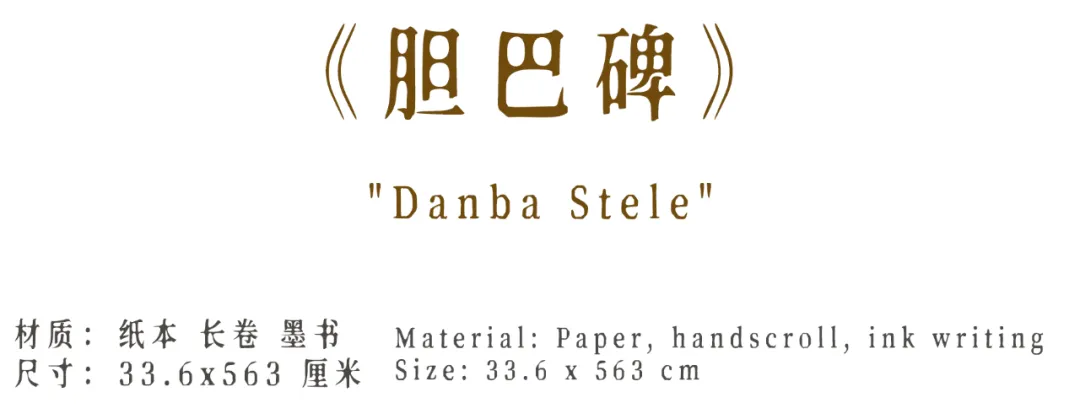

《帝师胆巴碑》,亦曰《龙兴寺之碑》,元仁宗皇命,赵孟頫遵旨撰于龙兴之寺,以彰帝师胆巴功德。胆巴,名嘉葛剌思,出自吐蕃突甘斯旦麻(即今蜀石渠),至元七载受封帝师,皇庆元年,追赠“大觉普慈广照无上胆巴帝师”,终身布施,怀悲悯之心,广济众生。
赵公执笔,其势苍茫而笔力雄健,每一提挥皆显深厚之态,于端庄之中透出天真烂漫之韵,实为赵体之精髓。汲取唐李邕、柳公权之法,气质雄浑且深沉,融合“二王”韵味,使险峻之态化作肃穆,乃赵书之大楷杰篇。
此碑,不仅赞胆巴帝师悲天悯人之德,亦显赵孟頫书法之至臻。笔下之锋芒,非独铭文之记,亦承载斯文之气,敬仰高洁之德。《帝师胆巴铭》留芳百世,为千秋大业之珍宝,示赵公书艺之卓绝,与深邃文心。
"Imperial Tutor Danba Inscription," also known as "The Stele of Longxing Temple," was commissioned by Emperor Renzong of the Yuan dynasty. Zhao Mengfu followed the imperial decree and composed it in Longxing Temple to commemorate the virtues and deeds of the Imperial Tutor Danba. Danba, whose name was Jia Gelasi, came from Tubo Tuganstanma (now Shiqu, Sichuan). In the seventh year of the Zhiyuan era, he was conferred the title of Imperial Tutor. In the first year of the Huangqing era, he was posthumously awarded the title "Great Enlightened, Universally Compassionate, Illuminating, Supreme Imperial Tutor Danba." Throughout his life, he was dedicated to charitable giving, harboring a heart of compassion, and extensively aiding all beings.
As Zhao Mengfu took up the brush, his strokes were vast and vigorous, each unfolding with profound depth, revealing a natural and carefree charm amidst solemnity, truly embodying the essence of Zhao's style. Drawing inspiration from Tang dynasty's Li Yong and Liu Gongquan, the vigor and depth of his writing integrated the charm of the "Two Wangs," transforming the ruggedness into solemnity, marking it as a masterpiece of Zhao's large script calligraphy.
This stele not only praises the compassionate virtues of the Imperial Tutor Danba towards the world and its people but also showcases the pinnacle of Zhao Mengfu's calligraphy. The sharpness beneath his brush is not merely for inscribing words but also for carrying forward the spirit of culture, admiring the virtue of integrity. The "Imperial Tutor Danba Inscription" remains a treasure for millennia, demonstrating Zhao's exceptional artistry and profound literary mind.
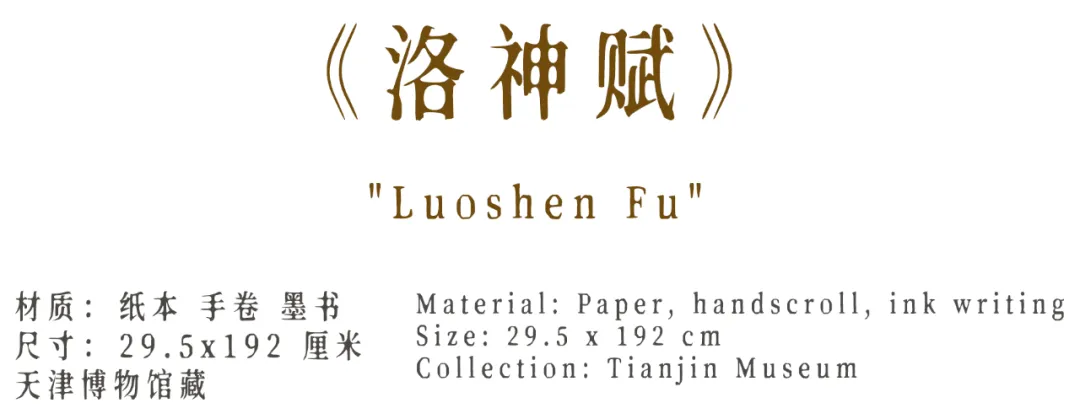

《洛神赋》之篇,元大德辛卯岁成,赵孟頫,寿四十七,铸之。是卷,结构严谨,行中融楷,笔法圆润,流转自如,乃孟頫行草之冠。卷中之美,深而不浅,洒脱而不俚,构思严谨,匀称而不紊,布局虽密,亦有疏透之致,笔锋飘逸,藏锋涵蓄,气势如山岳峻拔,深谷回环,继“二王”之余韵,亦显孟頫广博吸纳,自成一家之言。
是篇《洛神赋》不独纸上文字,更似山水之歌,引人遐想。其字如其人,宠辱若惊,锋芒内蕴。赵孟頫以此,探书法之极致美学,彰显其对生之深思,对艺之独鉴,使《洛神赋》成为汉家书艺之瑰宝,名显青史。
"The Luoshen Fu" was completed in the Xinmao year of the Great Virtue era (1300) by Zhao Mengfu, who was then forty-seven years old. This scroll is meticulously structured, blending regular script within its lines, with a round and flowing brushwork, making it the pinnacle of Zhao's semi-cursive and cursive script. The beauty of the scroll is profound yet not superficial, elegant without being vulgar, with a well-conceived and balanced structure. Despite its dense layout, it has moments of openness, with a brushwork that is graceful yet contains reserved strength. Its momentum is as imposing as towering mountains and as deep as winding valleys, continuing the legacy of the "Two Wangs" while also displaying Zhao's ability to absorb widely and establish his unique style.
This rendition of "TheLuoshen Fu" is not merely a piece of text on paper but resembles a song of mountains and rivers, inspiring far-reaching thoughts. The character of the writing reflects the man himself: unaffected by honor or disgrace, with hidden sharpness. Through this work, Zhao Mengfu explored the ultimate aesthetics of calligraphy, showcasing his profound reflections on life and his unique insight into art. This has made "The Luoshen Fu" a treasure of Chinese calligraphic art, celebrated through the annals of history.
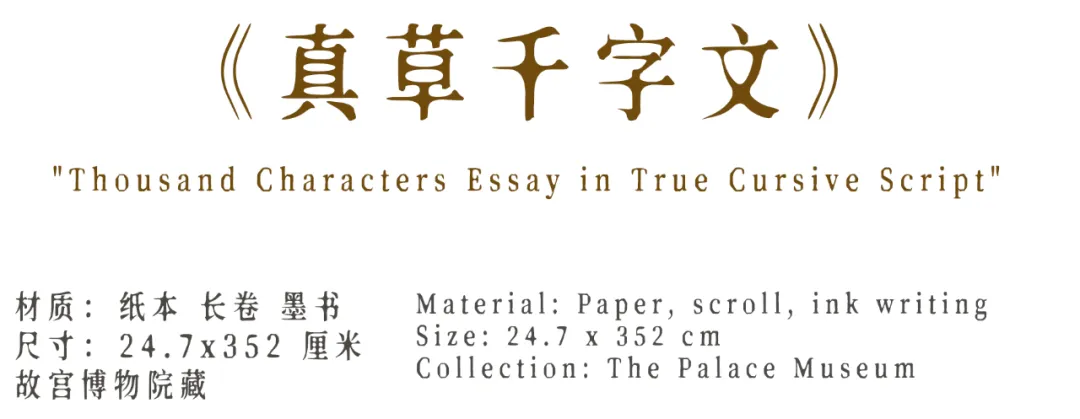


《真草千字文》,赵氏匠心独具,楷草兼施,书就二十五开半之轴。岁月虽不详载,然观其笔意风骨,此必孟頫早岁之作。其所铸,深得隋智永《千字文》之雅意,集典雅与流动之美,构思精严,笔法轻灵而不失严谨,乃书艺中罕见之珍品。
取法“二王”,笔势若飞龙在天,连绵不绝,笔力刚健有如弓弩,用笔主中锋辅侧锋,于字内之用笔亦然;结构正中为主,偏旁左右,章法则求篇章之连贯,非孤立之态。赵氏于结体之上,追求平稳中之变险,点墨布白,疏密相宜,错落有序,实乃书法之妙处。
"The Thousand Characters Essay in True Cursive Script," by Zhao Mengfu, displays unique craftsmanship, blending regular and cursive scripts into a scroll of twenty-five and a half sections. Although the exact date of creation is not recorded, the style and spirit of the brushwork undoubtedly indicate it as an early work of Zhao Mengfu. This piece, deeply influenced by the elegant charm of the "Thousand Characters Essay" by Zhi Yong of the Sui Dynasty, combinesical elegance with fluid beauty. It is meticulously conceived, with a brushwork that is both nimble and rigorous, making it a rare masterpiece in the art of calligraphy.
Adopting the techniques of "the Two Wangs," the strokes are elegant and fluid, with a momentum that is continuous and undulating, demonstrating a vigorous and resilient force. The use of the brush primarily focuses on the central tip, supported by the side tip, with a similar approach within the characters themselves. The structure predominantly maintains correctness, with side components arranged in a scattered yet orderly manner. The overall method aims for coherence throughout the composition, avoiding a sense of isolation. Zhao Mengfu's main characteristic in structure is to seek daring in stability, to distribute whitespace evenly, to balance density appropriately, and to arrange components in an orderly manner, indeed reflecting the exquisite techniques of calligraphy.
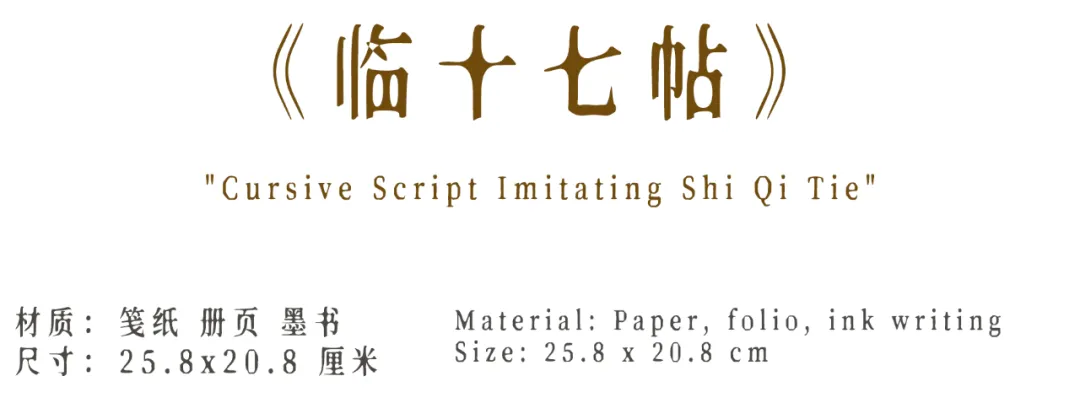

释文:“吾有七儿一女,皆同生。婚娶以毕,唯一小者尚未婚耳。过此一婚,便得至彼。今内外孙有十六人,足(“各”字点去)慰目前。足下情至委曲,故具示。子昂。”
Translation: "I have seven sons and one daughter, all born to me. They have all married except for the youngest, who has not yet married. After this last marriage, I will have achieved that goal. Currently, I have sixteen grandchildren, which is enough to comfort me at present. Your deep concern and intricate care are the reasons I am informing you in detail. From Zi Ang."
《草书临十七帖》,赵孟頫所铸,临王右军《十七帖》之《七儿一女帖》以示敬焉。赵氏之临,非等闲之作,经屡屡研究王帖之后,所铸之作,神韵流转,再造之妙也。帖中,赵氏笔法,熟透而自得,如玉之滑,如珠之圆,已悉捕王书之要领矣。
"The Cursive Script Imitating Seventeen Letters," crafted by Zhao Mengfu, pays homage to Wang Xizhi's "Seventeen Letters" with the "Letter to His Seven Sons and One Daughter." Zhao's imitation is not an ordinary one; after repeated studies of Wang's letters, he produced a work that not only captures but also recreates the essence and charm. In this letter, Zhao's brushwork is mature and natural, as smooth as jade and as round as pearls, fully capturing the essence of Wang's writing.
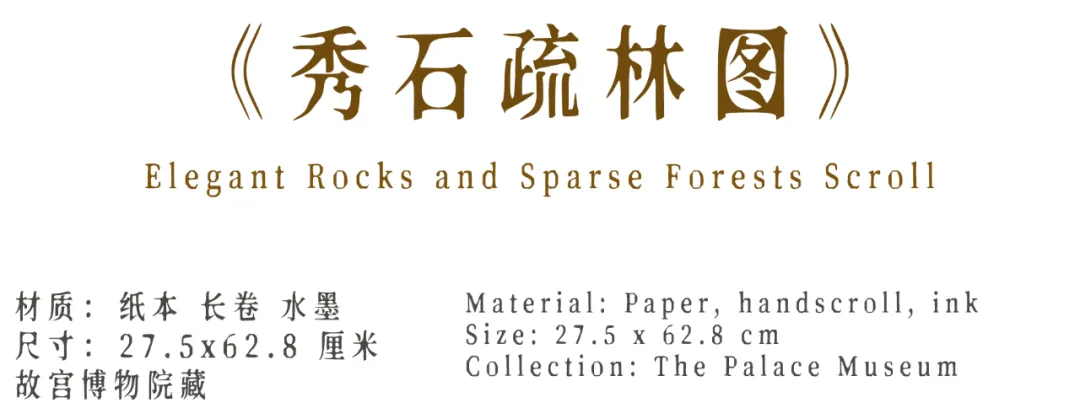

《秀石疏林图》之作,画面以磐石之稳,古木之苍,梅枝之曲展现自然之美,木石互补,相得益彰。画技之上,用飞白笔法绘石,以劲挺笔触描竹,笔墨之势苍劲而简逸,显文人之秀雅风骨。巨石尽用草书笔法,树与荆棘则采楷、隶书法,兰竹则以篆书笔触呈现。赵孟頫之绘竹石,力求“书法化于画中”,此作乃元代文人画风范中最具代表性之佳作。
"The Elegant Rocks and Sparse Forests Scroll" captures the beauty of nature with the stability of boulders, the vigor of ancient trees, and the twisted forms of plum branches, where rocks and wood complement and enhance each other. In terms of technique, the artist employs the "flying white" brushwork for rocks and firm strokes for bamboo, creating a composition that is both vigorous and elegantly simple, reflecting the refined spirit of the literati. The boulders are entirely rendered in cursive script brushwork, while trees and thorns are depicted using regular and clerical script techniques, and orchids and bamboo are presented with seal script strokes. Zhao Mengfu's depiction of bamboo and rocks emphasizes the incorporation of calligraphy into painting, making this piece one of the most representative works of Yuan dynasty literati painting style.
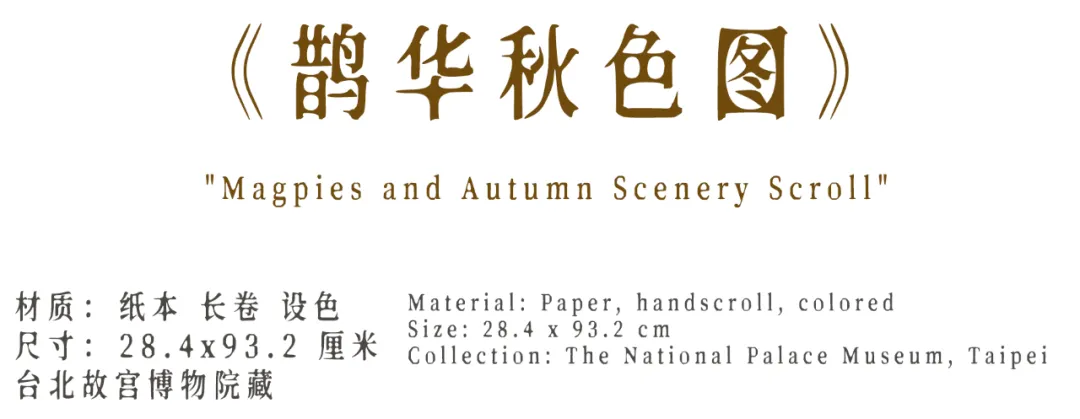

《鹊华秋色图》,元贞元年(1295年),赵孟頫离济南路官归,南之途中,为友周密(1232-1298年)画其祖地之貌。图之构简而意远,在广泽之旁斜岸之上,右立华不注之峰,左抱鹊山之圆。图中之林木斜岸,颇似董源之山水,经赵氏之笔墨与设色,益显生动趣味,成一幽美之景。黄公望由赵氏之法,悟笔墨之新意。
"Magpies and Autumn Scenery," created in the first year of the Yuanzhen era (1295), was painted by Zhao Mengfu after leaving his official post in Jinan Road, during his journey southward, for his friend Zhou Mi (1232-1298) to depict the landscape of his ancestral home. The composition of the scroll is simple yet profound, between a broad marsh and a sloping bank, with the sharp peak of Hua Bu Zhu Mountain on the right and the rounded Magpie Mountain on the left. The trees and slopes in the painting closely resemble the landscape style of Dong Yuan, yet through Zhao Mengfu's brushwork and coloring, it becomes more vivid and interesting, forming a serene and charming natural scene. Huang Gongwang was able to grasp a new vitality in brushwork from Zhao Mengfu's method of combining tradition and innovation.
责任编辑:苗君